10 Questions for Painter Anthony Brunelli, a Pioneer of the Photo-Realist Panorama
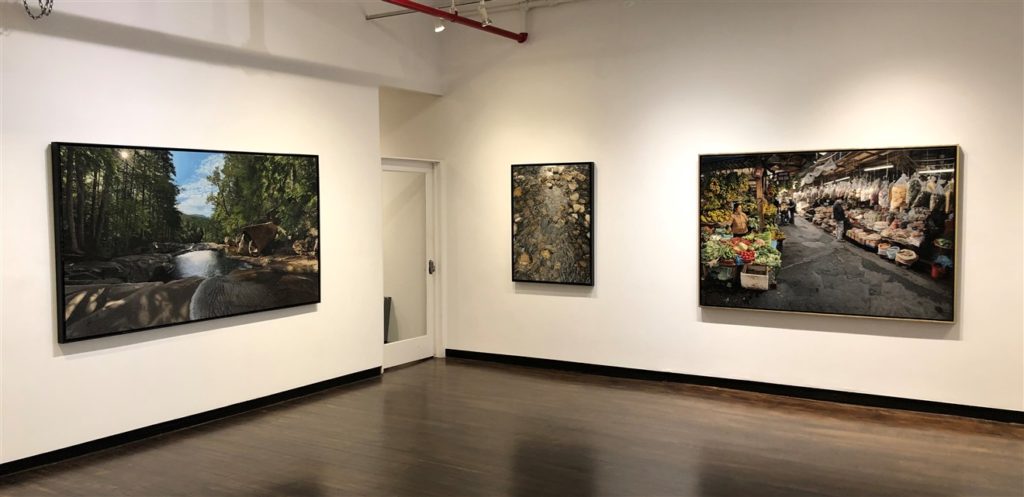

Artnet Gallery Network

Photorealist paintings create a dizzying effect that is itself oddly pleasurable—what at first glance might appear to be a large-scale photograph reveals itself to be a meticulously rendered depiction of a street corner, a face, or a still life, and the eye vacillates back and forth, absorbing the whole while dazzling at the individual brushstrokes.
For Binghamton, New York, native Anthony Brunelli, the desire to push the limits of photorealism has been the guiding principle of his 25-year career. Brunelli broke into the scene in the 1990s with his industrial cityscapes of upstate New York, in which he pioneered some of the earliest photorealist panoramas.
Over the years he has brought his meticulous touch to scenes from around the world, from Asian marketplaces to European urban intersections. Now, “Anthony Brunelli: In Retrospect,” an exhibition at New York’s Louis K. Meisel Gallery, is taking a look back at how his photorealist cityscapes have developed over the decades. On the occasion of the exhibition, we caught up with Brunelli, who told us about the influence of Chuck Close on his work and his unexpected alternate dream job.
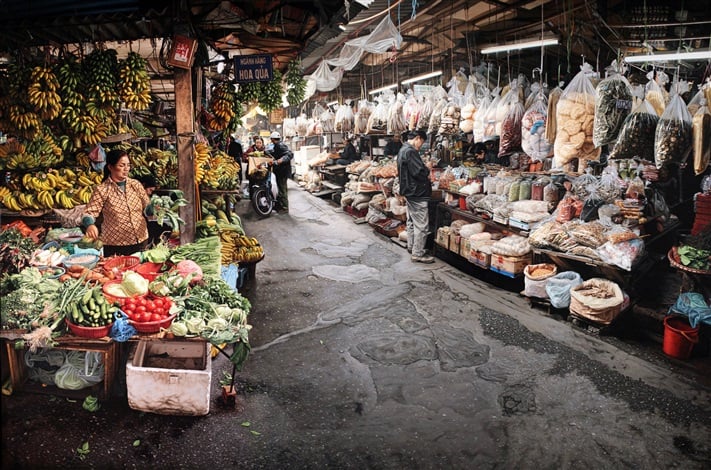
Anthony Brunelli, Banana Lady (Hanoi), 2012. Courtesy of Louis K. Meisel Gallery.
How did you decide you were going to become a painter, and a photorealist painter at that?
I’ve known I wanted to be an artist since I was four years old. I would copy the comics and thought I would become a cartoonist or an animator. That changed when I visited New York City during a school trip in high school and we visited a SoHo gallery where Chuck Close’s giant thumbprint portraits happened to be on display. I was entranced. And Chuck Close happened to be at the gallery I got to meet him and take a picture in front of one of his works. When I got home, I tried to find books about him. One of these was Louis Meisel’s book Photorealism (1980). It was after that I knew I wanted to become a photorealist.
Can you describe your process to us? Do you take your own photographs or do you work from found images?
I always take my own photographs, photographing what speaks to me. I currently use a digital SLR camera. Most shots require several photographs, sometimes upwards of 100, and then I input the images into a stitching program that blends them for me into one image. I grid it and project it onto a canvas where I sketch in the details. From there, I begin painting the underpainting, which is very detailed as far as underpainting goes, usually working from top left to bottom right. After the canvas is covered, I go back to tighten up the details.
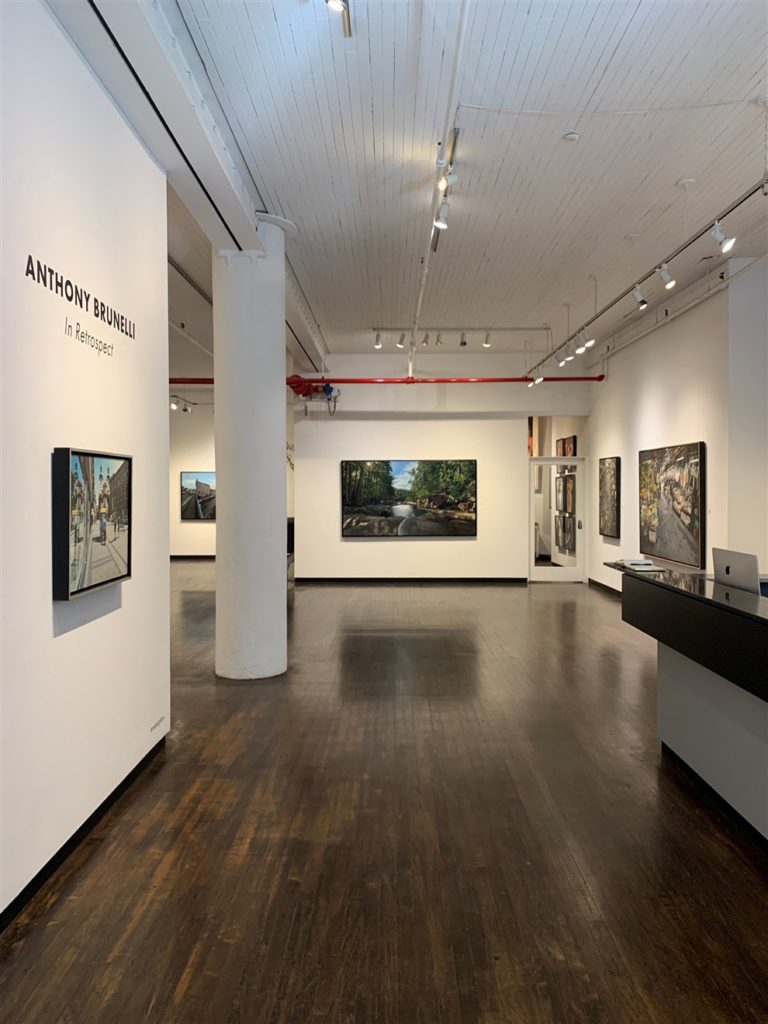
Installation view of “Anthony Brunelli: In Retrospect” at Louis K. Meisel Gallery.
How long does it take you to create your paintings?
It depends on the size and subject matter, but on average a four-to-eight-foot painting usually takes about six to 10 months.
How do you choose your subject matter?
I began painting my hometown of Binghamton and the small towns around it—places I knew and loved. When I visited Asia for a photorealism tour I fell in love with the countries and cultures I saw and painted their way of life, market scenes, and busy streets. That set off a traveling bug and I have since painted many countries. I look for many things: people’s way of life, people enjoying their city, interesting architecture.
Do you paint while you’re abroad or do you wait until you’re back?
I’ve never painted abroad. My work is a process and I don’t travel with my computer, projector, easel, and other paraphernalia. However, I have studios in both New York and Florida, and during my travels have set up studios at one of my art dealer’s homes as well as at my daughter’s house. When we spend a lot of time in one place I need to paint. It’s a release for me.
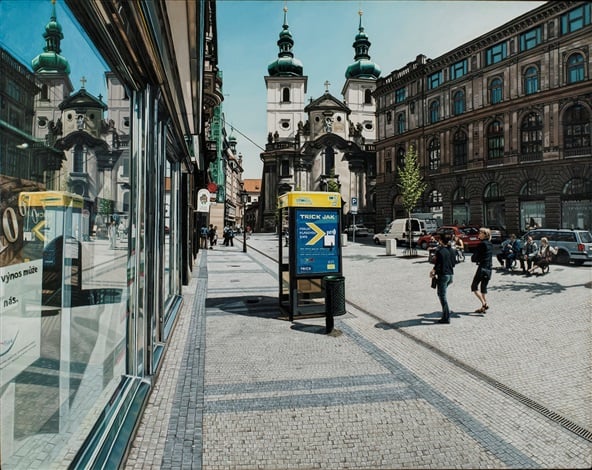
Anthony Brunelli, Trick Jak (2005). Courtesy of Louis K. Meisel Gallery.
What do you find to be the best surfaces or materials to paint?
I’m strictly an oil painter and I mostly paint on linen or polyester. I have painted on board, but the surface of the linen or polyester is easier because it has a little bit of a tooth and holds the paint better.
What’s the largest work you’ve ever made?
The largest painting I’ve ever made was of the Grand Prix Formula One races in Monaco. It’s about five-feet high by eight-feet wide, and Prince Albert is in it!
Which photorealist painters do you most admire?
Chuck Close pulled me into the movement. I actually began painting large portraits before I moved on to the urban landscapes I am known for. Richard Estes is one of my favorites too. And though I feel I have my own style, his work has definitely influenced mine.
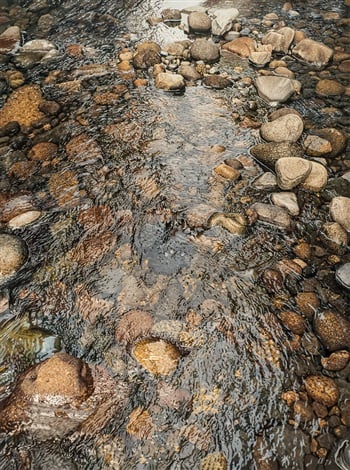
Anthony Brunelli, Infinity (2018–2019). Courtesy of Louis K. Meisel Gallery.
What about artists outside of photorealism?
Charles Schultz was the first artist I admired. I wrote to him when I was seven and received a reply! I also love Norman Rockwell. The way he portrays his subjects’ facial expressions is priceless. Edward Hopper is another of my favorites, with his paintings of small towns where the emotion just bleeds through the canvas. Van Gogh’s art has always spoken to me with all the movement in his strokes. And Dali’s work, for the stories it tells.
If you weren’t a painter, what would you be?
That’s tough. Painting isn’t who I am, but it is a large part of me. I have thought about becoming a motivational speaker since I enjoy speaking, and when I’m passionate about something people seem to resonate and respond.
“Anthony Brunelli: In Retrospect” is on view at Louis K. Meisel Gallery through Saturday, November 9, 2019.
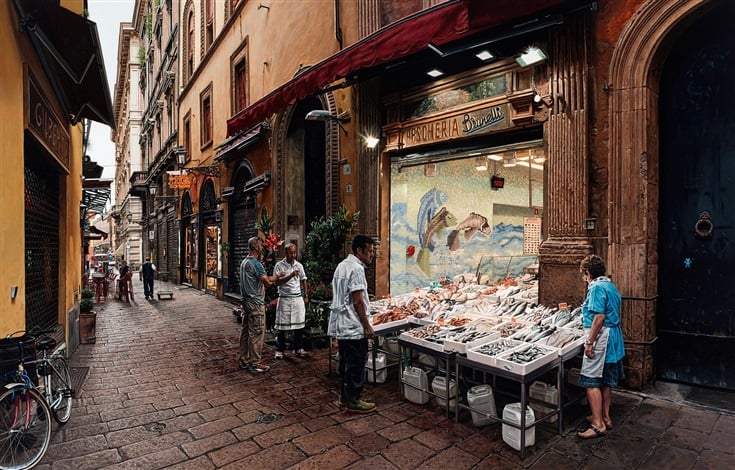
Anthony Brunelli, Pescheria Brunelli (2019). Courtesy of Louis K. Meisel Gallery.
